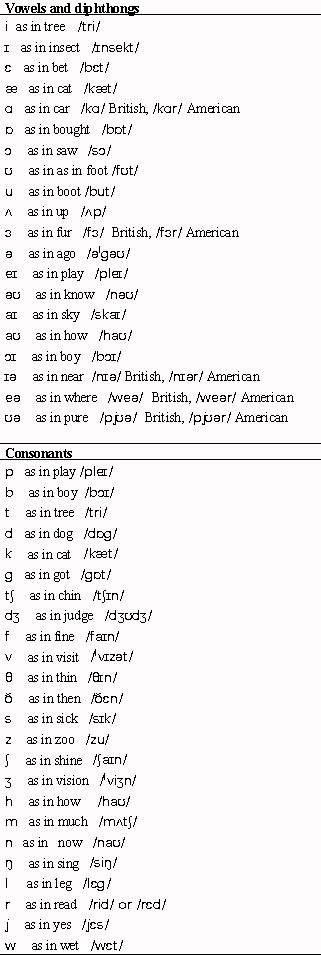
Deciding how and when to introduce and utilize the International Phonetic Alphabet often has teachers scrambling, but it doesn't have to be stressful or complicated.
Follow these tips to introduce a useful tool to your students and of course, don't forget about the powers of Schwa!

How to Introduce the IPA (International Phonetic Alphabet)

-
1
What is it?
The International Phonetic Alphabet (IPA) is a system used to transcribe words phonetically, or by how they sound. This is done by utilizing universal symbols to represent the spoken sounds in language. You can view the IPA here with examples of the sounds each symbol is replicating. Because pronunciation varies from region to region, the IPA provides a systematic and uniform way to perform these transcriptions. Most English dictionaries use the IPA as a standardized system to show pronunciation for all words. By using universal symbols to do so it takes the guesswork out of the often complicated and conflicting spellings of English words. The International Phonetic Alphabet represents specific sounds in language, not necessarily letters. For example some of the blended consonants sounds like “sh” are represented with one symbol because the two letters together produce one sound.
-
2
The Options
Teachers who choose to use the International Phonetic Alphabet in some capacity have a few choices how to do so. One way is to memorize and intimately get to know the alphabet for yourself so that you can then utilize in the classroom. If you plan to introduce the entire phonetic alphabet to students and require them to memorize it, it is only appropriate that you should also do the same. The problem with using the entire phonetic alphabet is that it is time-consuming to introduce and to master. Also, many students will feel intimidated by such a task. If you undertake this strategy, be sure that your students can handle the in-depth instruction and practice it will require to get the best results.
That being said, there is another option. Many teachers opt to learn the IPA as they go or in the increments that they believe are useful for particular groups of students. That also means that the students would not be required to learn the entire IPA, but would utilize pieces of it to help resolve pronunciation questions, issues, or confusion. Some teachers choose to only use the IPA to display specific vowel sounds that may cause students difficulty, or for those consonant sounds that have great similarity.
Still a third option is to give the students the entire alphabet, generally in chart form, and allow them to choose whether they would like to use it or not. You should also let them know that most dictionaries use it, so they can begin to learn key symbols.
Whichever option you choose, it is helpful for students to have some exposure to the International Phonetic Alphabet and know that it exists. Also, whether you choose to use the IPA in its entirety or in chunks, it is important not to introduce too much at one time. You don't want to overwhelm learners so an appropriate guideline is to teach no more than two to three sounds at a time. Create activities around the specific symbols so students learn to connect the sounds and the symbols. It might also be helpful to introduce the most useful symbols first and then add one or two at a time throughout the duration of the class.
-
3
Schwa and a Other Useful Symbols
The most powerful and useful symbol has been given a name. It is Schwa. Schwa is represented by the upside-down small [e] sign as represented in the chart. Schwa is the most common vowel sound in English, and it is short and to the point. It is a fun sound to create and the more you learn about it, the more you will see just how often it occurs in spoken language. It's like the short u sound, or the sound a person makes when contemplating or stalling, like, “uh.” All vowels make the schwa sound at one time or another. Here are some examples of words with the schwa sound:
The letter a: about, banana, was
The letter e: the, open, travel, item, taken
The letter i: animal, family, pencil
The letter o: above, gallon, dinosaur,another
The letter u: particularFor more on Schwa and how to teach it, reference this article from the BBC.
Two other very useful symbols are the two symbols for “th” sound. One displays the voiced sound as in the word then and the other displays the voiceless sound as in the word thin. Utilizing these two symbols can very clearly demonstrate the difference between these sounds, and helps with tongue placement that can be confusing. Determining which symbols will be of considerable use for you will depend on your students, the region, and the common problems those students face. For example European students will have common pronunciation difficulties that are separate from students in Asia or South America. And further still, the countries within each region have their own dialects and pronunciation challenges. Keep this in mind when tailoring IPA coursework and instruction.
Utilizing the International Phonetic Alphabet provides many different ways for students to refine their pronunciation.
It takes a little getting used to, but with practice you will find that it can open up a whole new way for students to learn and develop their language skills.
P.S. If you enjoyed this article, please help spread it by clicking one of those sharing buttons below. And if you are interested in more, you should follow our Facebook page where we share more about creative, non-boring ways to teach English.







